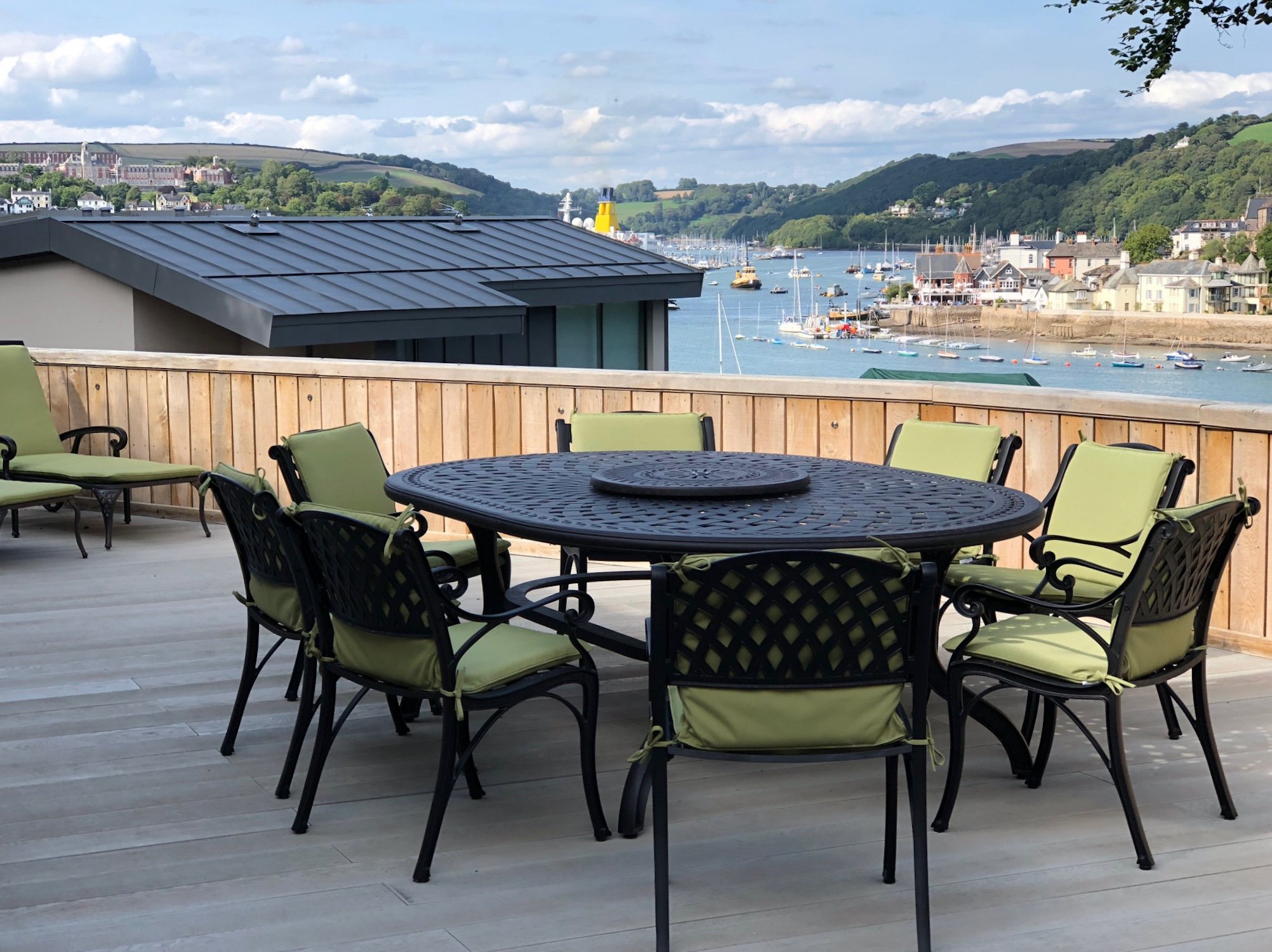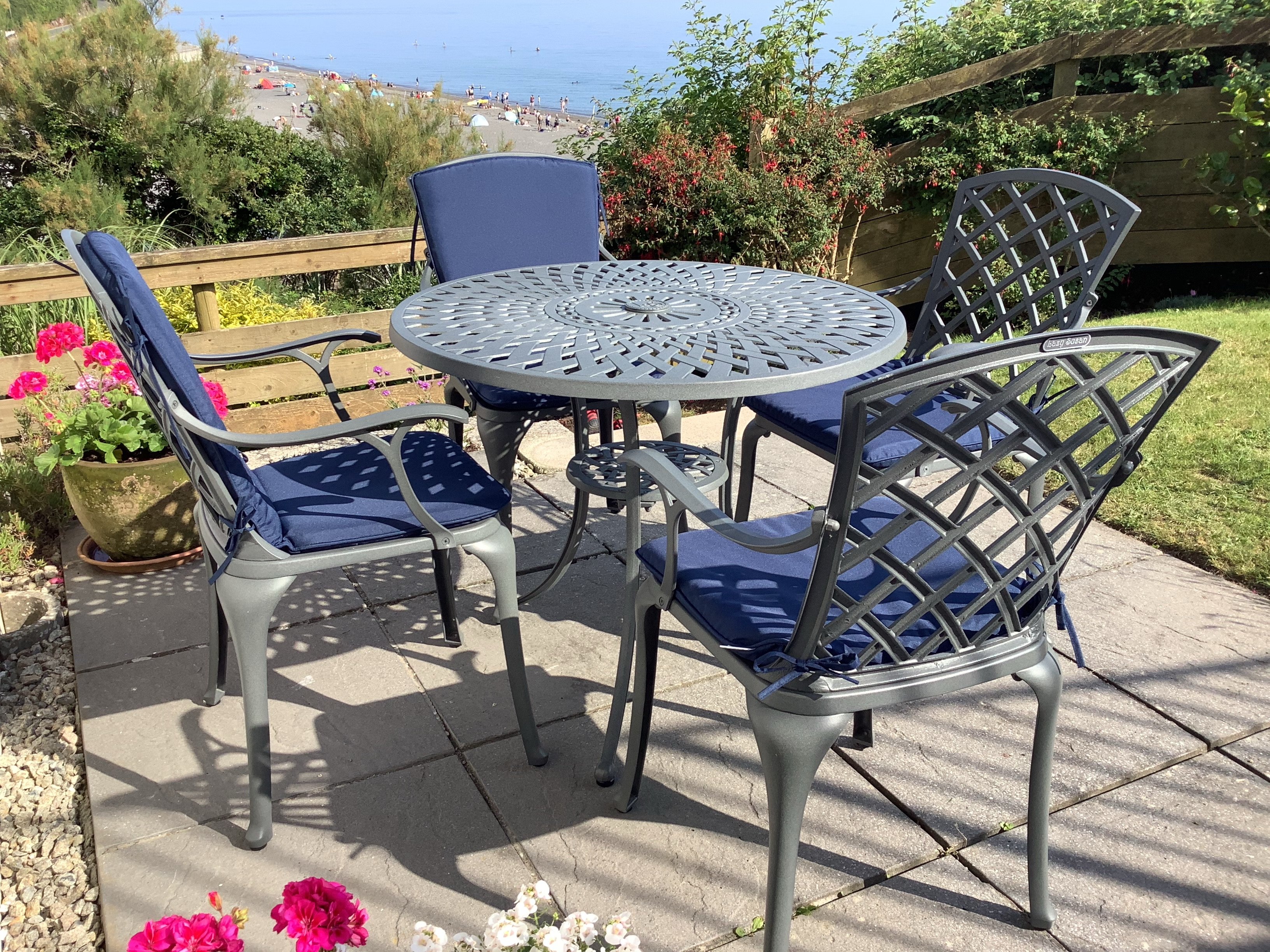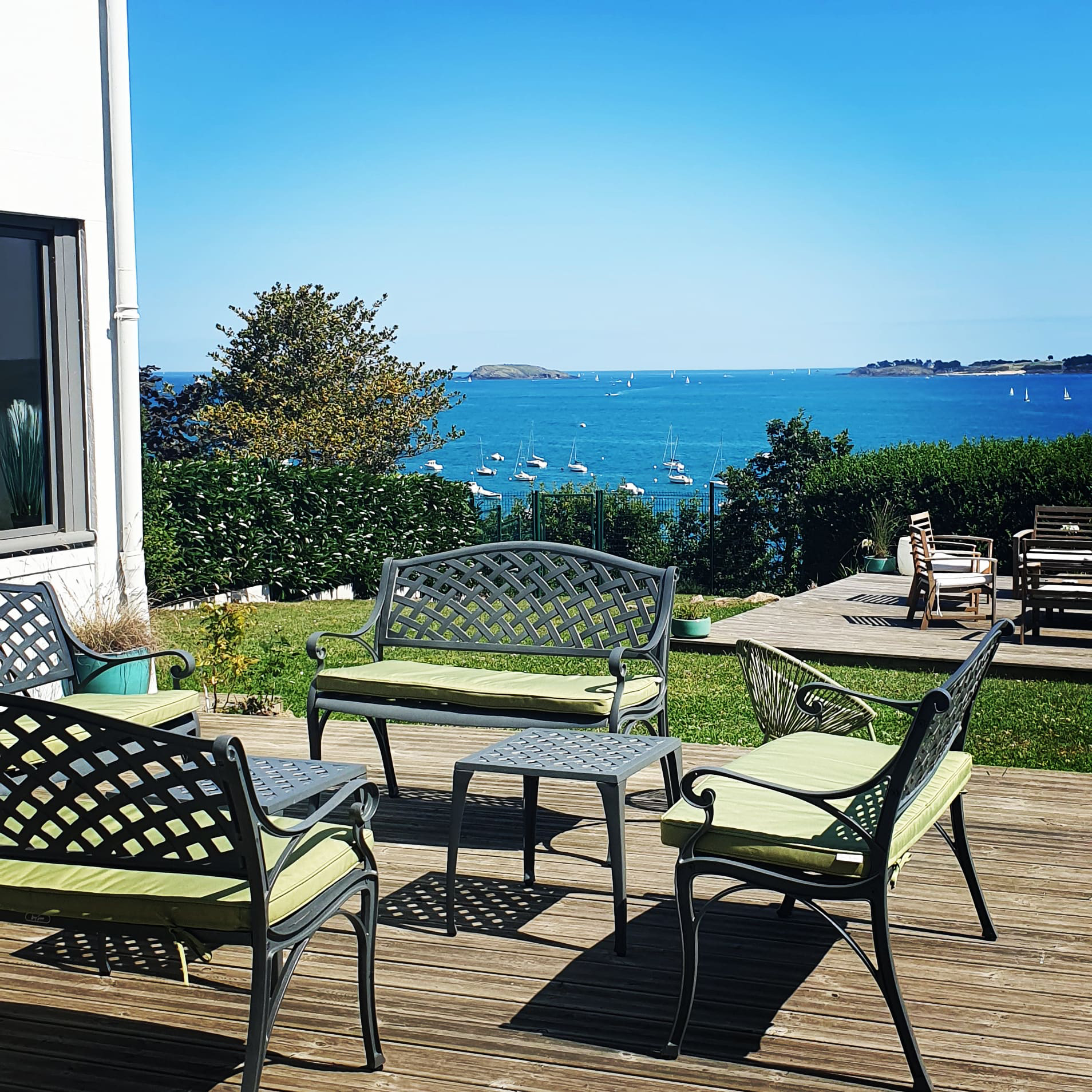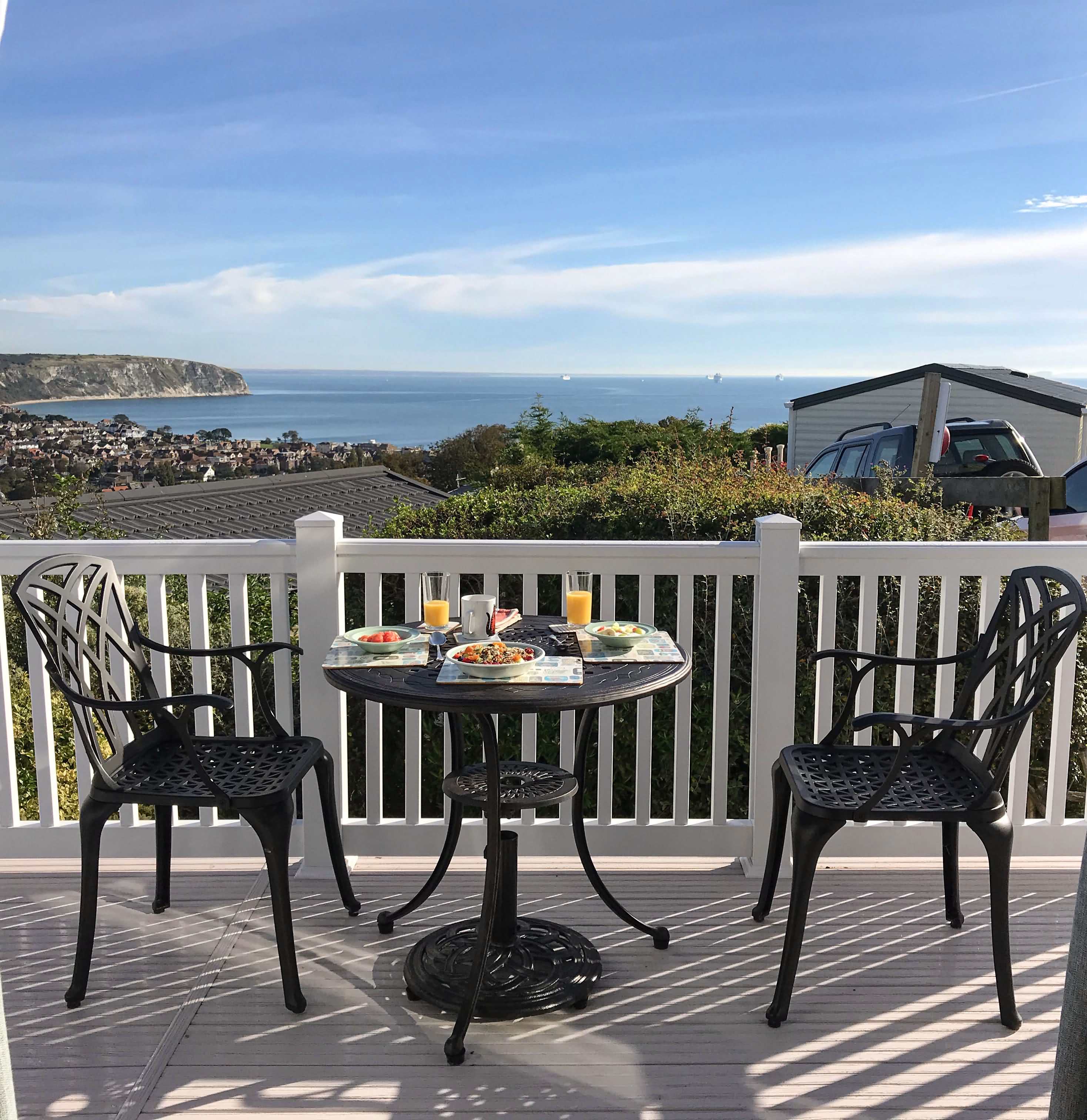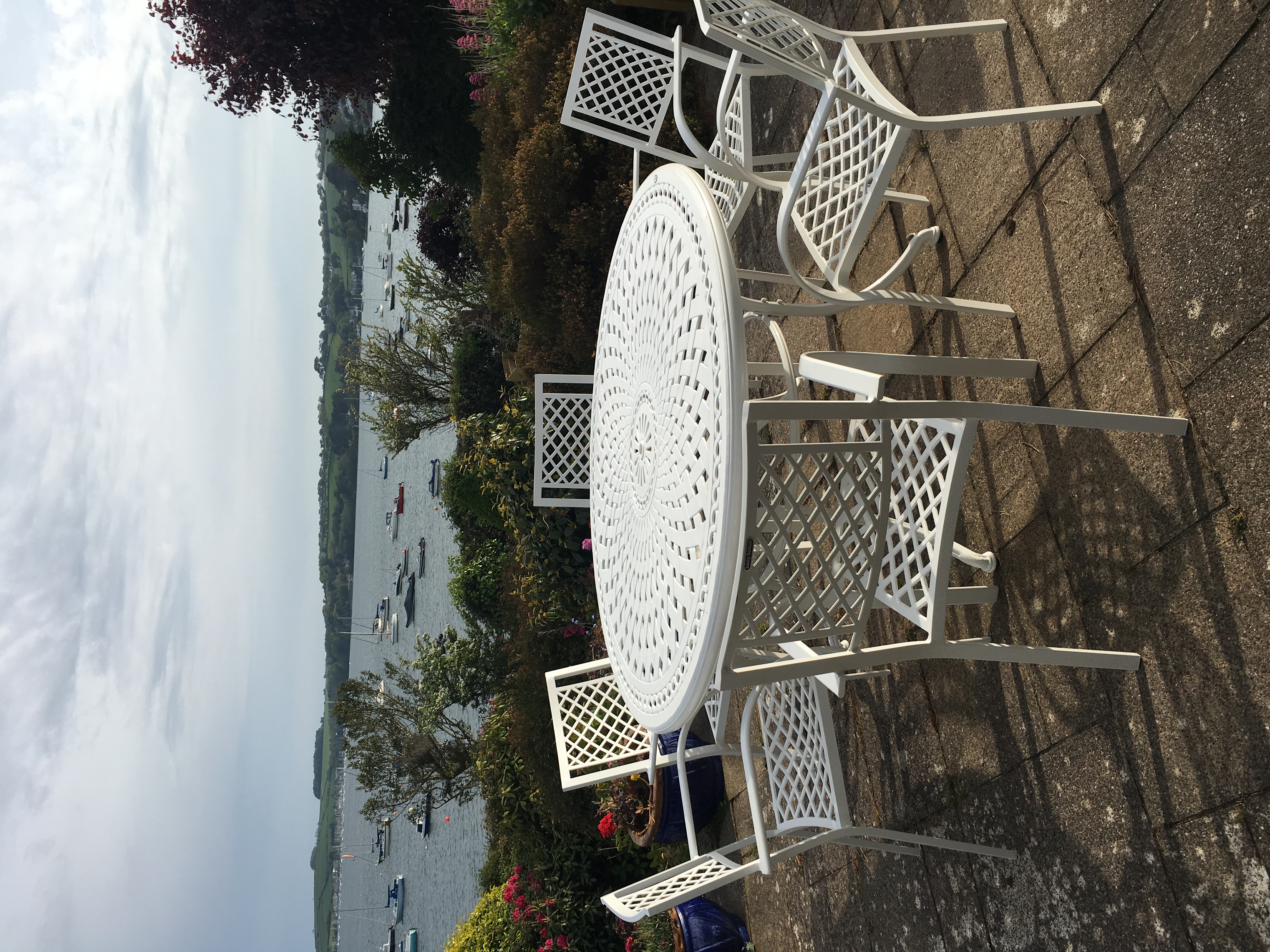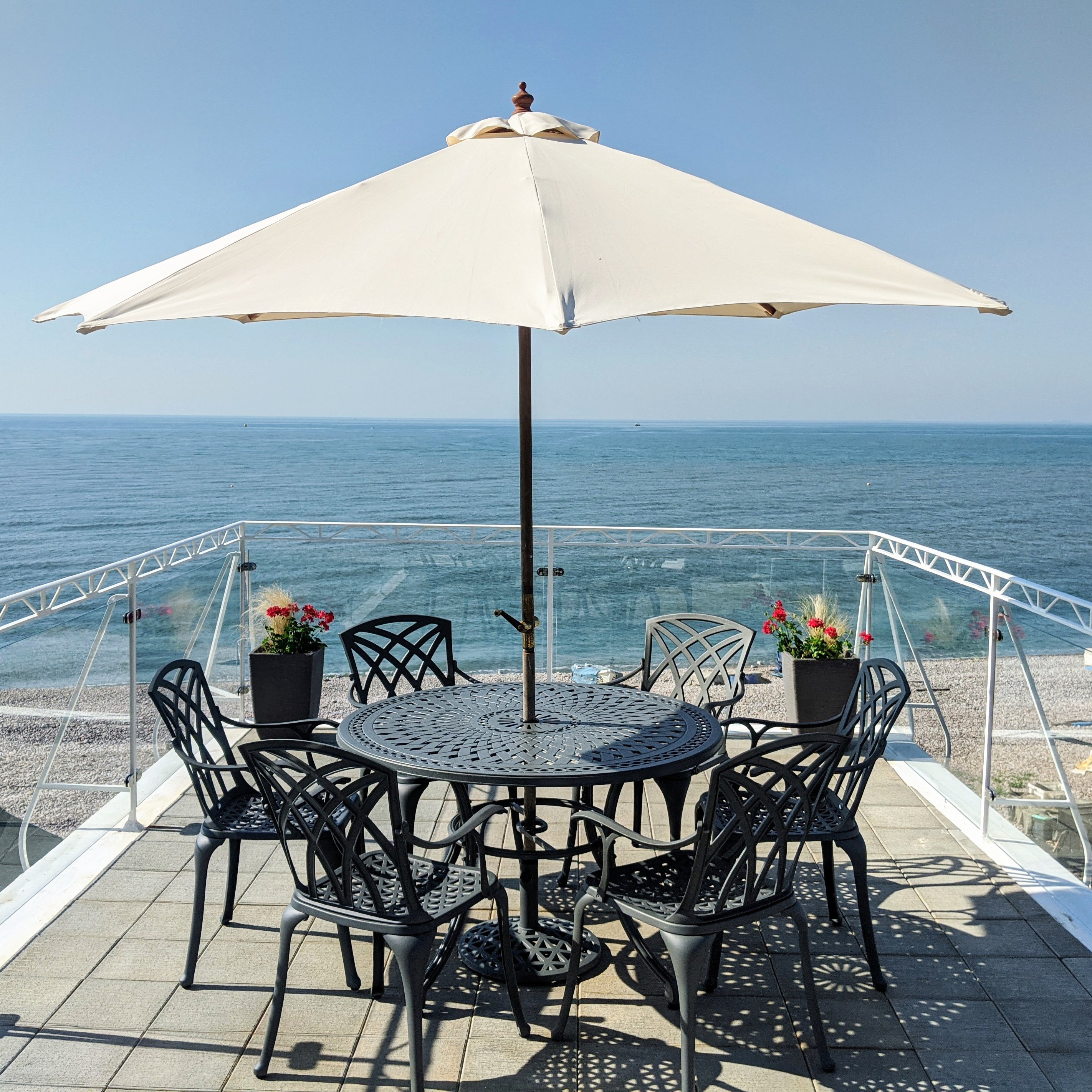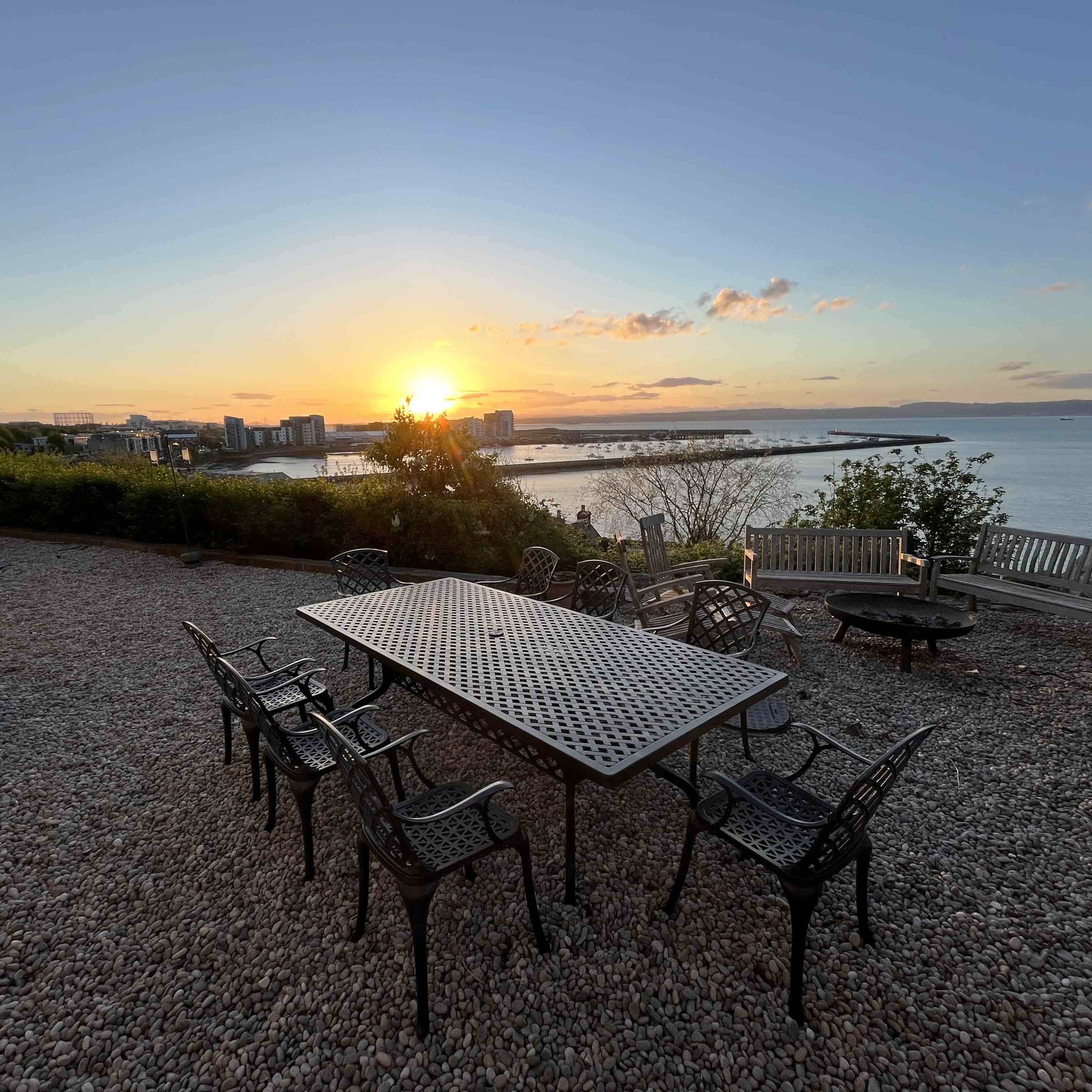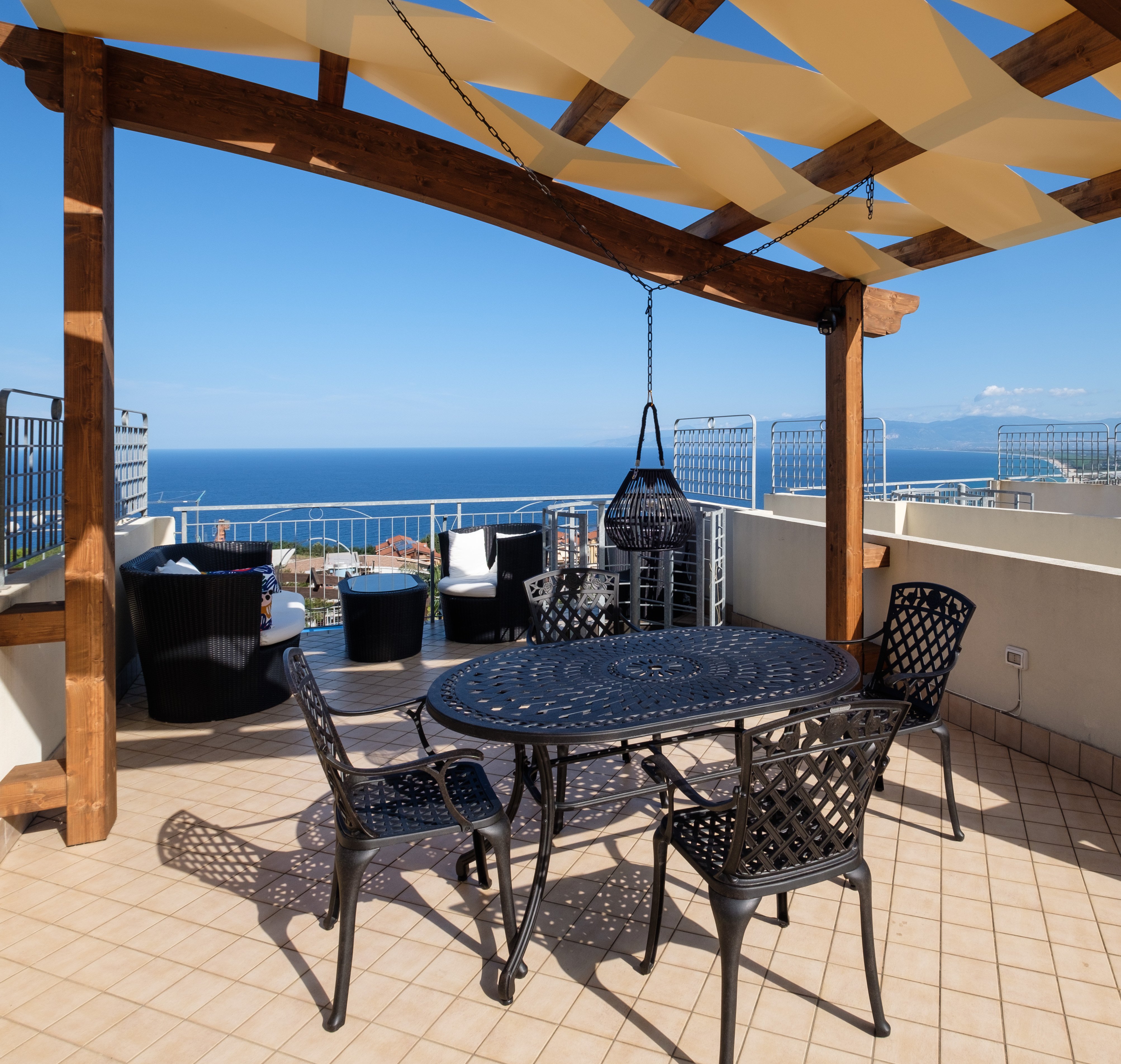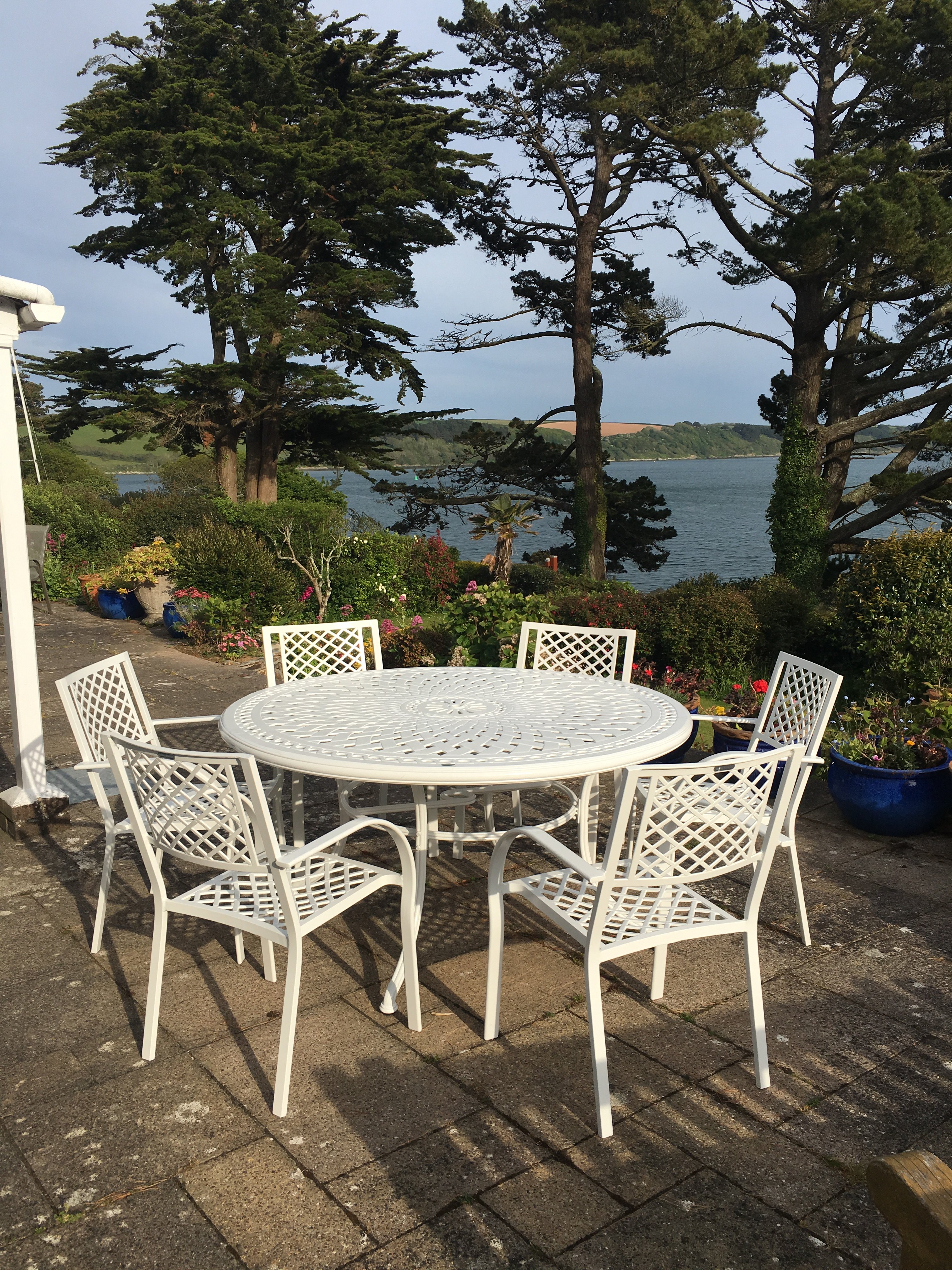Living close to the sea will expose your outdoor furniture to some unique challenges that you won’t get living even a few extra miles inland.
We all know the health benefits of living by the sea but that fresh sea air means that anything left outside and exposed to the elements can weather quickly due to the unique environmental conditions present in coastal areas.
Many factors combine and contribute to the accelerated weathering of patio furniture materials when you live near the sea, such as:
-
Salt
Due to a process called “aerosolization”, whereby sea water is broken up into tiny droplets by the wind and waves, salt particles are released into the air and they accelerate the corrosion of metal surfaces and degradation of wood and plastics over time. -
Moisture
Coastal areas tend to experience higher levels of rainfall due to a host of factors such as orographic effects, proximity to water, and prevailing wind patterns, which leads to increased moisture absorption in materials like wood that can swell, warp, or rot much quicker at the coast. -
UV
While the sun is no stronger at the coast than inland, sunlight reflecting off the water can intensify UV radiation exposure, leading to faster fading, cracking, and deterioration of outdoor furniture materials like plastics, fabrics, and painted finishes. -
Wind
Coastal regions are often subject to stronger winds, which can exacerbate the abrasive effects of the salt air and accelerate physical wear and tear on outdoor furniture. -
Temperature
Coastal areas often experience more frequent temperature fluctuations due to the moderating effect of the sea. This too can contribute to the expansion and contraction of materials, leading to cracks, splits, and damage over time.
Combine all of the above, and what you get is an acceleration of the weathering of your furniture.
That said, we think that living by the sea is fantastic, and many of the team here at Lazy Susan live within a stone's throw of the English Channel!
Be it city, countryside or coast, they all have their unique patio furniture-related challenges.
However, the pros of living by the sea, for us, outweigh the cons, so it is just a case of being aware of them and knowing how best to tackle them.
By following our 8 simple proactive steps to protect and maintain your outdoor furniture, we can help mitigate the effects of coastal living and prolong the lifespan of your outdoor furniture.
Here are our 8 tips to help protect your garden furniture if you live by the sea:
1. Choose outdoor furniture made from appropriate materials
Opt for furniture made from materials that are resistant to corrosion and moisture, such as stainless steel, our powder-coated cast aluminium, teak, cedar, or synthetic rattan.
Choosing patio furniture made from appropriate materials is crucial if you live on the coast due to the unique environmental conditions present in coastal areas.
Look for materials that are:
-
Corrosion Resistant
Choosing materials such as stainless steel, cast aluminium, or other powder-coated metals will help prevent rust and corrosion, ensuring your furniture lasts longer. -
Water Resistant
Opting for materials that are resistant to moisture, such as powder-coated metals, teak, cedar, or synthetic wicker, can prevent warping, rotting, and mould growth. -
UV Resistant
Selecting UV-resistant materials or using protective coatings will help to prolong the lifespan of your furniture and maintain its appearance. -
Durable
Choosing a durable high-quality material and construction will ensure your furniture can stand up to coastal conditions and remain functional and attractive for years to come. -
Low-Maintenance
Materials like synthetic wicker or cast aluminium are easy to clean and require minimal upkeep compared to wood or non-powder-coated metals.
Shop around, do some research and look for outdoor furniture pieces or sets that are made from materials that will ensure that your outdoor space remains functional, attractive, and resistant to the unique challenges posed by living at the seaside. We looked in detail at the suitability of our range in our What garden furniture is best for the UK climate? article.
2. Apply a protective coating for additional protection
Use outdoor furniture waxes, sealants, coatings, or marine-grade varnishes to provide a barrier against salt, moisture, and UV. Re-apply these coatings regularly as per the manufacturer’s guidelines.
Our range is constructed from rust-resistant aluminium that is then powder-coated to protect it from the elements. The finish does not need reapplying, making it the perfect material for both the inclement UK weather and the climate found on our coastlines.
If you want to give it a little extra protection, then we recommend a light coat of carnauba-style car wax applied with a microfibre cloth.
It will reduce the need to clean as it helps prevent dirt and grime from sticking to the surface and it helps moisture bead and run off so it dries quicker.
Our steps for application on our range are as follows:
-
Wash
Never apply any finishing products to dirty garden furniture. A bucket of warm water with a little car shampoo and a sponge is all you need. You can rinse off with the garden hose on a spray setting but avoid the pressure washer as it is just too powerful and not necessary. Rinse, wash, rinse and leave it to dry in the sun for an hour or so. -
Apply
Apply the wax using an application pad or a soft microfibre cloth. Always do this outside with your furniture in situ. You only need a small amount, don’t dig into the wax, just wipe it across and apply in a circular motion. Make sure you get into the detail and latticework cut-outs. -
Buff
Work in small sections at a time. Once a section of wax is applied buff it up with a clean soft lint-free cloth or microfibre towel to give it a nice finish.
Last month's Is it best to wax, oil, paint, or varnish garden furniture? article discusses what is best for wood, resin, rattan, iron and stainless steel in detail.
3. Cover your furniture when not in use
Covering your garden furniture when not in use offers several benefits, especially if you live in a coastal area or any other part of the UK for that matter:
-
Protection
Covering your garden furniture shields it from exposure to sunlight, rain, snow, wind, and other environmental factors that can cause damage over time. This protection helps prevent fading, rusting, corrosion, and deterioration of materials, prolonging the lifespan of your furniture. -
Prevention
It will prevent dirt and debris from building up. Outdoor furniture left uncovered is more susceptible to accumulating dirt, dust, leaves, sap, bird droppings, etc. Covering your furniture when not in use helps keep it clean and reduces the need for frequent cleaning and maintenance. -
Usage
Moisture can seep into the fabric, cushions, or cracks and crevices of your furniture, leading to mould, mildew, or rot depending on the material. Using covers will help prevent moisture build-up, protect it from the sea air at the coast, preserve the integrity of your furniture and ensure it remains dry and ready to use. -
Maintenance
Covering your garden furniture will also help to maintain its appearance by preventing sun fading, discolouration, and other coastal weather damage. This ensures that your furniture looks new for longer, enhancing the overall appearance of your outdoor space.
Make sure the covers are made from a breathable, waterproof material to prevent moisture buildup. Purchase individual covers for each piece of furniture rather than one large set-size cover as it is easier to put them on/secure them and they’re less likely to blow off.
Our Should I cover wooden garden furniture? article looks closely at whether you should cover wooden garden furniture in the winter and if the type of timber it is made from matters.
4. Clean your outdoor furniture regularly
Salt and moisture can accelerate the deterioration of several outdoor furniture. By cleaning your furniture regularly with washing up liquid in and warm water you can prevent any salt residue and dirt from building up.
Here is why we would recommend cleaning your furniture every month or so if you live close to the sea:
-
Corrosion
Salt from the sea air can cause corrosion and rust on metal parts of outdoor furniture. -
Prevention
Higher moisture levels near the sea create a favourable environment for mould and mildew growth. Especially on outdoor furniture cushions, fabric, and wooden furniture. -
Maintenance
Sea air, sand, dirt, and seagull droppings can accumulate on outdoor furniture, leaving stains that could discolour or damage the finish. -
Finishing
Dirt and salt left to build up on outdoor furniture can scratch surfaces and cause damage over time, especially on delicate materials like wicker and rattan.
Last month we looked at How to care for our 6-seater metal sets but the 8 simple easy-to-follow steps we listed will help you maintain all of the furniture in our collection.
5. Store indoors during harsh weather
If you have the option, then store your garden furniture indoors or move it to a sheltered area during severe weather conditions such as storms or during the winter months.
These are our tips for storing your patio furniture during bad weather or the off-season if you live on the coast:
-
Clean
Before storing your patio furniture indoors, make sure it's clean and dry. -
Disassemble
If your patio furniture is designed to be disassembled, take it apart before storing it to save space and make it easier to move. With our furniture, for example, many of our chairs are stackable and you can easily remove legs from table tops. Just make sure you keep all fixtures and fittings in a safe place! -
Location
Select a dry area for storing your patio furniture indoors during winter. This could be a garage, shed, or indoor storage room. Avoid storing furniture in areas prone to moisture or extreme temperature fluctuations. -
Protect
If your patio furniture has cushions or delicate materials that may be susceptible to damage, store them indoors separately from the main furniture pieces in a breathable storage bag. Again, make sure you only store if dry. -
Cover
If storing in a garage or shed, then we would also recommend that you cover your furniture with protective covers or blankets to keep dust and debris off and provide an extra layer of protection from potential scratches. -
Check
Throughout the winter months, periodically check on your stored patio furniture to ensure it remains in good condition.
If you want to know how to safely store your furniture in a shed or garage for winter, then our How to safely store our metal garden furniture article has some great advice.
6. Check the furniture is supplied with rust-resistant hardware
It is often overlooked but any hardware such as screws, bolts, washers, etc supplied with your garden furniture must be made from rust-resistant materials like stainless steel or brass as you will find in our range.
Checking if the patio furniture you want to order is supplied with rust-resistant hardware is especially important if you live on the coast for several reasons:
-
Durability
Rust-resistant hardware is less likely to corrode or degrade when exposed to salt air, ensuring that your furniture remains sturdy and functional. -
Looks
Rust can detract from the appearance of your patio furniture, causing it to look aged, worn, or unsightly. -
Damage
Rusting hardware on furniture materials such as timber can cause damage and staining to the finish. -
Maintenance
Patio furniture with rust-resistant hardware will require less maintenance and will not need to be replaced as frequently. -
Weather Resistance
Rust-resistant hardware will help your furniture withstand the elements more effectively, reducing the risk of damage and deterioration.
Choosing patio furniture with rust-resistant hardware is a wise investment that can contribute to its longevity, appearance, and ease of maintenance.
7. Inspect and maintain whatever the outdoor furniture material
By regularly inspecting your outdoor furniture for signs of wear, rust, or damage, you can nip things in the bud and address any issues promptly by sanding, repainting, or repairing as necessary to prevent further deterioration.
Inspecting and maintaining your outdoor furniture is especially crucial if you live close to the coast due to the unique environmental challenges posed. If you find a chip or scratch on your Lazy Susan furniture, you can touch it up as follows:
-
Materials
All you need to repair a chip or scratch is Lazy Susan Touch-up Paint, a kitchen roll, clean lint-free cloths, a bucket of warm soapy water and a car wax (optional). -
Clean
The first step is to make sure the area you want to repair is clean and free from any dirt or debris. Just give it a wipe with a damp cloth soaked in warm water and a little washing-up liquid. Pat it dry with a sheet of kitchen roll or leave it in the sun for 5 minutes or so. -
Apply
Once clean and fully dry, apply a small amount of the black, grey or white base paint with the applicator brush. -
Remove Excess
Remove any excess paint with a sheet of kitchen roll. The best results are achieved, if you build the paint up in 2 or 3 layers, rather than applying one large blob of paint and leaving it to dry. -
Stage 2 Paint
If you have our white or grey finish then you can skip this and the next step. If you have our antique bronze then it requires 2 stages to create the finish. When you are happy with the coverage of the base layer, it is level with the surrounding paintwork and is dry to the touch, you can carefully dab on a small amount of the bronze paint. Again, with a sheet of clean kitchen roll, carefully dab the bronze paint to create the stippled antique effect. -
Repeat
Repeat the process until you are happy with the finish and the paint chip or scratch is no longer visible. Leave it to dry fully for a couple of hours before use. -
Wax
To provide a little extra protection, apply a light coat of carnauba-style car wax with a soft lint-free cloth.
8. Position your patio furniture strategically
Another simple way to protect your outdoor furniture if you live on the coast is to place it in areas that offer some natural protection from the elements, such as under trees, pergolas or awnings. This will reduce direct exposure to salt air and sunlight.
Here are a few things to consider:
-
Wind Direction
Determine the prevailing wind direction in your area and position your furniture to protect it from strong coastal winds. -
Natural Barrier
Utilise existing natural barriers such as trees, bushes, or shrubs to create a windbreak and shield your furniture. -
Garden Structure
If possible, position your outdoor furniture under a covered or semi-enclosed garden building such as a covered deck, porch, pergola, or gazebo to provide additional protection from direct sunlight, rain, and salt air. -
Flexibility
Opt for lightweight, movable furniture such as our cast aluminium range that can be easily repositioned as needed to adapt to changing weather conditions or shifting wind direction.
Our final thoughts on how to protect outdoor furniture if you live on the coast...
If you live on or close to the sea these tips will help you to best protect your garden furniture from the often harsher effects of a coastal climate.
By strategically positioning, selecting appropriate materials, taking protective measures and maintaining your outdoor furniture, you can create a comfortable and durable outdoor living space that withstands the challenges of coastal living.
Regular inspection and maintenance of your outdoor furniture are essential in preserving appearance, functionality, and structural integrity.
With our range, we simply advise that you remove any build-up of salt residue, dirt, and debris from the painted surface using washing-up liquid and warm water. Give it a rinse, apply a light coat of car wax and cover it when not in use to keep it clean.
By staying vigilant and implementing some basic maintenance steps, you can ensure that your outdoor furniture remains in good condition and withstands the unique challenges of coastal living.
If you have any photos of your Lazy Susan Outdoor Furniture in your seaside paradise, then we’d love to see a few for our Do Some Good charity campaign. You can tag us @LazySusanFurniture on Instagram or Facebook or Upload Here.




